A STATUE of Saint Michael, in front of Saint Michael Church, in Steelville, Missouri.
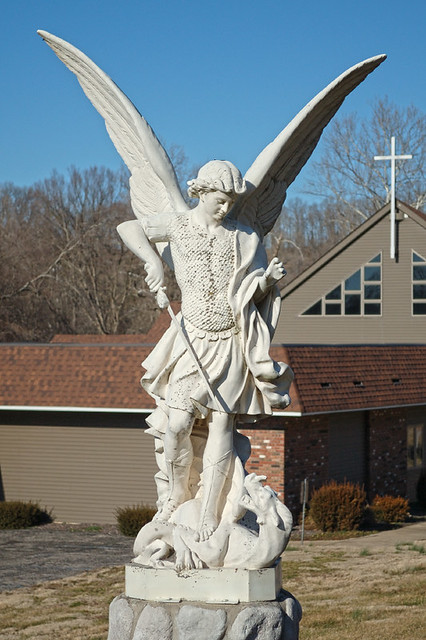
Lest we forget, Lent is a time of spiritual warfare, and images of Saint Michael and of Saint George, vanquishing the dragon that is Satan, can be inspirational.
CHRIST THE WARRIOR is the theme of the early Anglo-Saxon poem “The Dream of the Rood,” told from the point of view of the Holy Rood — or Cross — itself.
...Ongan þā word sprecan wudu sēlesta:Christ, in some catechesis, is portrayed weak — but not so, especially here! He is heroic, embracing the suffering of the Cross in fulfillment of His Father’s will. Christ is Lord, and here is appropriately portrayed as a noble warrior lord and king, while the Rood is His loyal subject, making its last stand against Christ's enemies.
‘Þæt wæs gēara_iū, (ic þæt gyta geman),
þæt ic wæs āhēawen holtes on ende,
āstyred of stefne mīnum. Genāman mē ðær strange fēondas,
geworhton him þær tō wæfersyne, hēton mē heora wergas hebban.
Bæron mē þær beornas on eaxlum, oððæt hīe mē on beorg āsetton,
gefæstnodon mē þær fēondas genōge. Geseah ic þā frean mancynnes
efstan elne micle, þæt hē mē wolde on gestīgan....
—
...The most excellent tree then began to speak the words:
It was years ago (that, I still remember),
that I was cut down from the edge of the forest,
removed from my foundation. Strong enemies seized me there,
they made me into a spectacle for themselves, commanded me to lift up their criminals.
Men carried me there on their shoulders, until they set me on a hill,
many enemies secured me there. Then I saw mankind’s Lord
hasten with great zeal, that he wished to climb upon me.
There, I did not dare break to pieces or bow downAn odd thing of this poem — at least to modern ears — is the personification of the Rood:
against the Lord’s words, when I saw the surface
of the earth tremble. I was able to destroy
all the enemies, nevertheless, I stood firmly.
The young hero stripped himself then (that was God Almighty),
strong and resolute. He ascended onto the high gallows,
brave in the sight of many, there, since he wished to release mankind.
I trembled when the man embraced me. However, I dared not bow down to the earth,
fall to the surface of the earth, but I had to stand fast.
I was raised as a cross. I lifted up the mighty king,
the lord of the heavens; I dared not bend down.
They pierced me with dark nails. On me, the scars are visible,
open malicious wounds. I did not dare injure any of them.
They mocked both of us, together. I was all drenched with blood,
covered from the man’s side, after he had sent forth his spirit....
...The time is now comeHowever, even in sacred Scripture we find trees and other inanimate objects praising the Lord: see Psalm 148, Isaiah 44:23, Isaiah 55:12, and the Canticle of the Three Children in Daniel.
that men over the earth and all this illustrious creation
far and wide honour me,
they pray to this sign. On me, God’s son
suffered a time. Therefore, now I rise up
glorious under the heavens, and I am able to heal
each one of those who hold me in awe.
Formerly, I was the most fierce of torments,
most hateful to people, before I opened the right
path of life to them, the speech-bearers.
Lo, the prince of glory, the guardian of the kingdom of the heavens,
honoured me over all the trees of the forest!
Just as he, Almighty God, before all men,
honoured his mother also, Mary herself,
over all womankind...
...Now I command you, my beloved warrior,The full text of the poem, along with a scholarly analysis, can be found at this website: http://www.dreamofrood.co.uk.
that you tell this vision to men,
reveal in words that it is the tree of glory,
on which Almighty God suffered
for mankind’s many sins
and Adam’s deeds of old,
He tasted death there. However, the Lord arose again
to help men with his great power....
FROM A SERMON on Ash Wednesday, by Saint Francis de Sales (1567–1622), Bishop of Geneva and Doctor of the Church:
Lent is approaching. Prepare yourselves to fast with charity, for if your fast is performed without it, it will be vain and useless, since fasting, like all other good works, is not pleasing to God unless it is done in charity and through charity. When you discipline yourself, when you say long prayers, if you have not charity, all that is nothing. Even though you should work miracles, if you have not charity, they will not profit you at all. Indeed, even if you should suffer martyrdom without charity, your martyrdom is worth nothing and would not be meritorious in the eyes of the Divine Majesty. For all works, small or great, however good they may be in themselves, are of no value and profit us nothing if they are not done in charity and through charity. I say the same now: if your fast is without humility, it is worth nothing and cannot be pleasing to the Lord. Pagan philosophers fasted thus, and their fast was not accepted by God. Sinners fast in the way, but because they do not have humility it is of no profit at all to them.
REMEMBER, MAN, you are dust and to dust you shall return.

WINTER IS MILD this season, and so flowers are blooming outdoors at the Missouri Botanical Garden in Saint Louis, Missouri, popularly known as Shaw's Garden. Several species are blooming several weeks early.

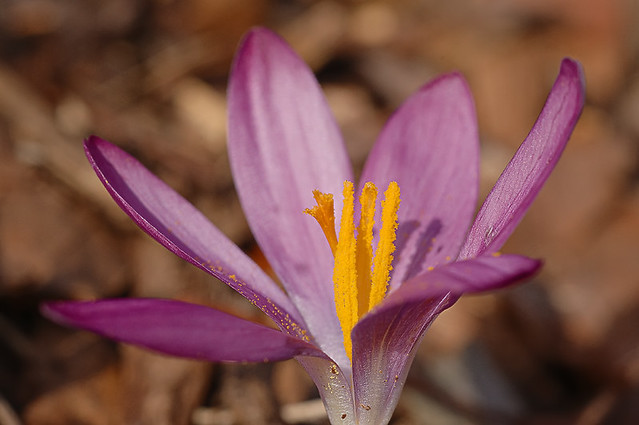

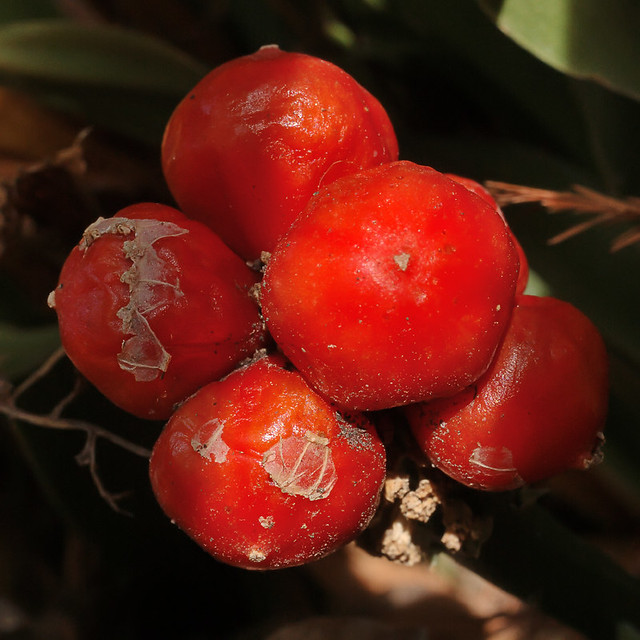





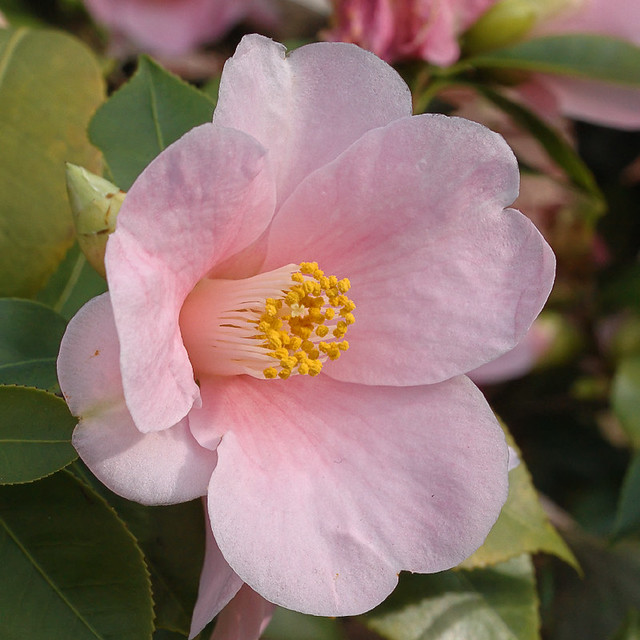
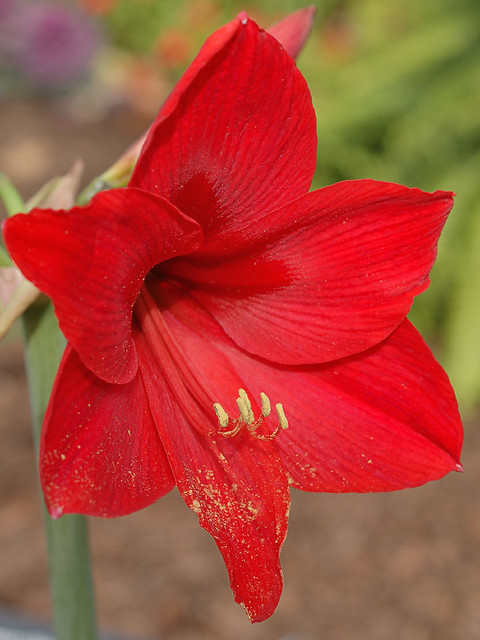


I AM CERTAIN that my gentlemen readers are now busy writing love poems to their lady love in honor of the feast day of Saint Valentine. But we live in such an unpoetical age that the process of poesy may be somewhat unfamiliar.
The limerick is furtive and meanRather, consider using the poetical form known as the heroic couplet. This uses pairs of rhymed lines of iambic pentameter, with each succeeding pair of lines having a different rhyme. As its name implies, this is a forceful, masculine form, and your lady ought to respond to it well:
You must keep her in close quarantine
Or she sneaks to the slums
And promptly becomes
Disorderly, drunk and obscene.
(C. Alan Reber)
My love for you is strong and will not die;Most poetry, unlike prose, is highly dependent upon its source language and dialect, since rhyming and word stress often varies even among speakers of the same language. Because of this, we can use ancient poetry to discern the pronunciation of words even in dead languages. As you can imagine, translating poetry well is a very difficult art.
“I do all this for you” my battle cry;
All that I have to give, indeed my life;
I give to you, my love, to be my wife.
HERE ARE PHOTOS of Saint Peter Church, which is adjacent to the Missouri State Capitol building in Jefferson City. Originally a part of the Archdiocese of Saint Louis and later the cathedral of the Diocese of Jefferson City, this parish church is located about 25 miles east of the geographic center of the state of Missouri in Cole County, and is about 127 highway miles west of downtown Saint Louis.
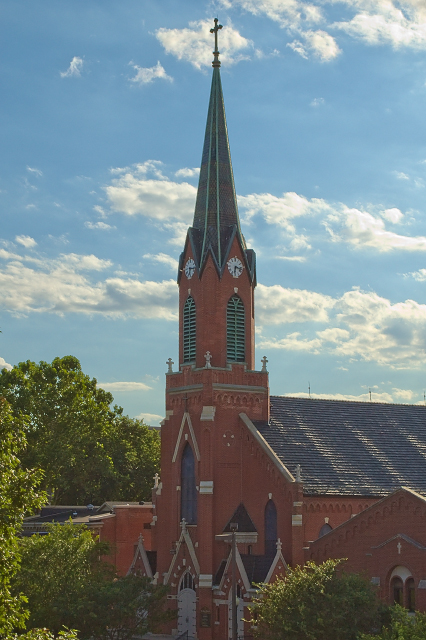
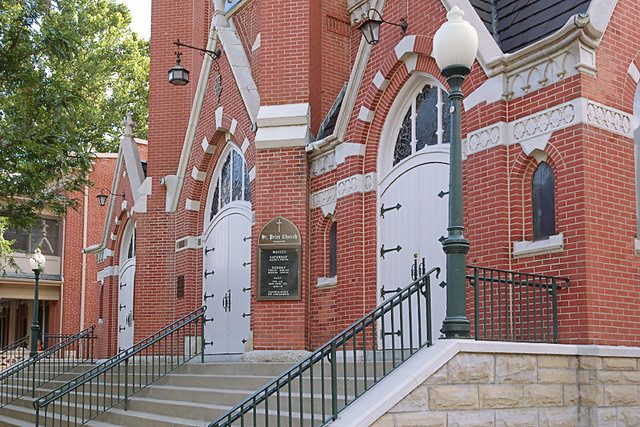
The history of St. Peter Church and Catholicism in Jefferson City can be traced back to just ten years after the founding of the capital city in 1821. Fr. Felix L. Verreydt, S.J., came from the Indian Mission of Portage des Sioux, St. Charles County, Missouri, and celebrated the first recorded Mass in Jefferson City in 1831 in the home of Bernard Upschulte, then located on the corner of High and Mulberry Streets, now located behind the Cole County Historical Museum. In 1838, Fr. Ferdinand Helias, S.J., newly appointed pastor at Westphalia, Osage County, Missouri, at the request of the visiting Rt. Rev. Joseph Rosati, C.M., first bishop of St. Louis, organized the local Catholics into a community and celebrated Mass in private homes until a site could be selected for a church. (Interestingly enough those "private homes" were less than 10 in number as records show a total of nine Catholic families registered in 1838!) Fr. Helias was also the first priest to minister to the inmates of the state prison, located in Jefferson City. The original candlesticks and crucifix that he carried in his saddlebags throughout his ministry are on display in the St. Peter Parish Life Center.
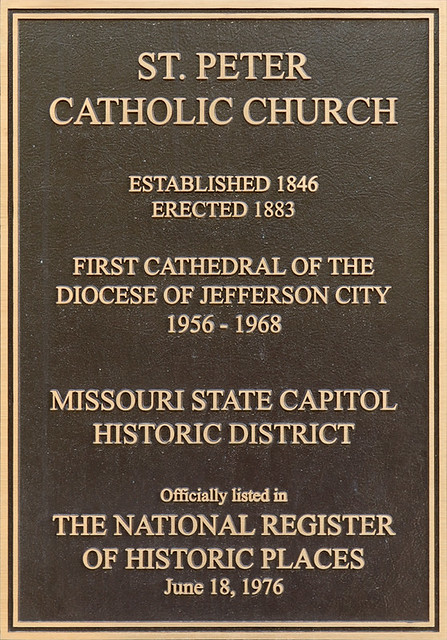
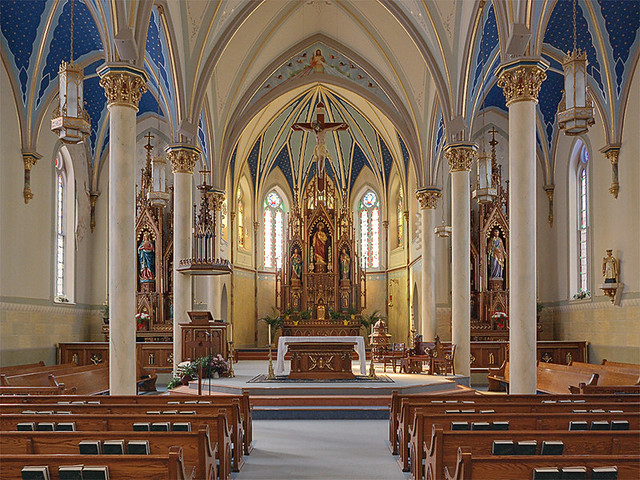
The present church was designed by Adolph Druiding and constructed by Fred H. Binder with 800,000 bricks donated by G.H. Dulle. It was placed on the National Register of Historic Places on June 18, 1976. The church is pure gothic. It is 173 and one half feet in length. It is 60 feet in width. It has a seating capacity of 700. The clock tower, a city landmark, rises to a height of 170 feet. The tower contains four bells cast by the Struckstede Foundry with an aggregate weight of 8,000 pounds, purchased at a cost of $1,354 and dedicated to St. Peter (55 inches in diameter), St. Joseph (46 inches), The Sacred Heart of Jesus (34 inches), The Blessed Virgin Mary (28 inches).The architect of this church, Adolphus Druiding, also designed the Shrine of Saint Joseph, Saint John Nepomunk, and Saint Agatha churches in Saint Louis, as well as many others throughout the eastern United States.
It is impossible to separate our parish history from the history of Jefferson City and the city’s role as the seat of state government. The clock, installed in 1888, is of service to both church and state. It rings the hour for divine services and every four years the new governor of Missouri is sworn into office when C-sharp minor cords have struck noon. In 1911, during the fire at the State Capitol building, which sits literally across the street from our parish home, the Missouri State House of Representatives used St. Peter’s School library to conduct business for the remainder of that legislative session. Gov. Joseph P. Teasdale, 1977-81, was a member of St. Peter and attended noon Mass frequently.
The interior of the church retains the gothic motif. Two majestic tiers of fourteen pillars support the ceiling, dividing the church into three naves. The height of the center nave is 56 feet; the two side naves are 42 feet. Three gothic reredos attest to our history. They are carved of white walnut with rich gilt. The main, center reredos, which houses the tabernacle, is 49 feet high. It contains a center statue of the Sacred Heart of Jesus. The two lower niches contain statues of St. Peter, the first pope, with keys, and St. Paul, Apostle to the Gentiles, with sword. The side reredos are 24 feet in height. The shrine to the Blessed Mother contains statues of St. Agnes, patroness of virgins, with a lamb, and St. Rose of Lima with the Christ child, patroness of South America (a link which the Diocese of Jefferson City has enjoyed through our missionary work in Peru). On the opposite side is a statue of St. Joseph, accompanied by one of St. Aloysius Gonzaga, patron of youth, with crucifix, and another of St. Francis de Sales, patron of authors and the press, with a book.
The present church's service to Jefferson City began on Feb. 2, 1883, when Monsignor Hoog celebrated the first Mass. It was solemnly dedicated on Aug. 12, 1883, by the Rt. Rev. Patrick J. Ryan, Coadjutor Bishop of St. Louis.
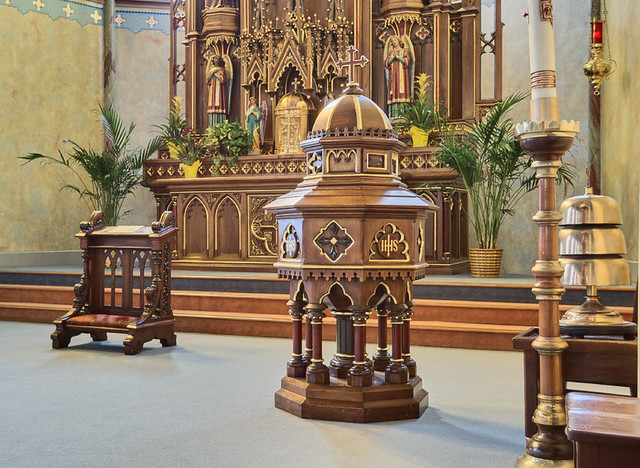
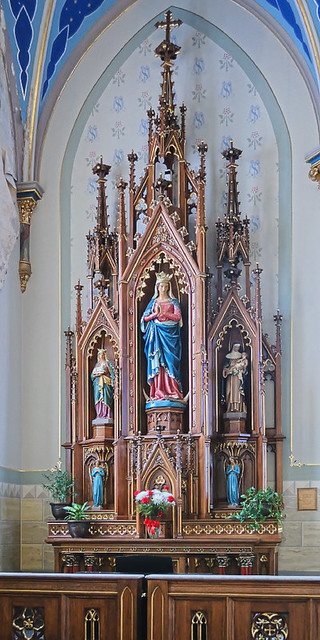
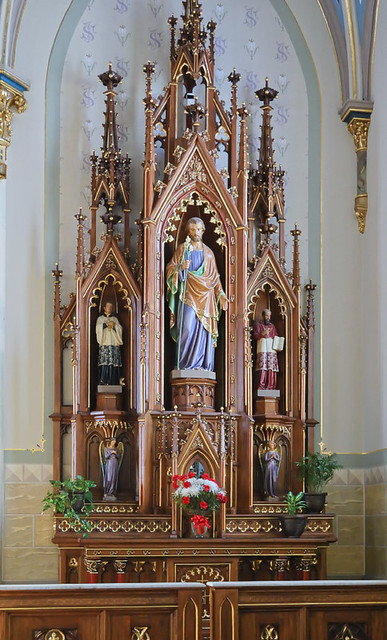

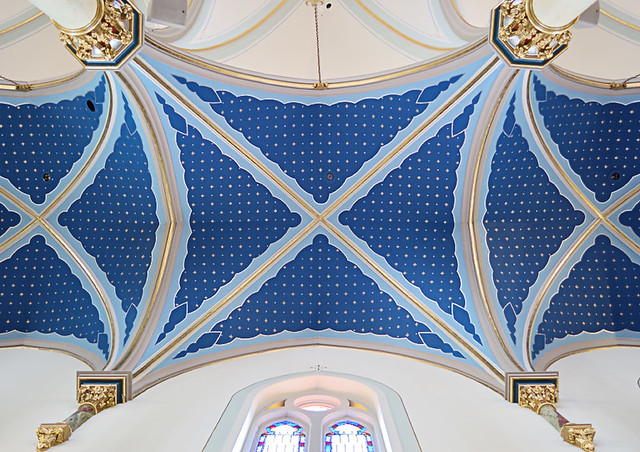
In 2002, the interior was again refinished. The work seeks to implement a guiding principle for renovating older churches. There is no substitute for an ecclesiology which is both ancient and modern in the fullest sense (Built of Living Stones USCCB, 2000). The values of beauty, mystery, and awe guided the work of the Liturgical Design Consultant, Mr. Tom Sater, and the Church Interior Committee, made up entirely of parishioners, in the most recent renovation of our Church. It was important that these concepts blend the gothic architecture and the guide the décor chosen for the Church. Much time was spent studying numerous photographs of the Church from various times in its history so that the artwork from these historic times could be incorporated into the present renovation.
In Western cultures, gothic is considered the most religious architectural style because of the ascendant structure, which draws one’s eyes toward heaven and encourages us to meditate on God and the things of God. This is expressed architecturally through the windows and pillars as well as through the colors that were chosen. Darker colors were selected for the ground level and gradually become lighter as it ascends towards the heavens. The colors chosen for the Church décor were determined by the colors in the stained glass windows and the outside bricks and stone.
The side naves’ celestial sky treatment with clouds and stars, harkens to the early Gothic desire to Embrace the Heavens. The center nave contains stenciling that reminds us of the five wounds of Christ. The red drop reminds us of the blood of Christ shed for us. It is surrounded by the nails of the crucifixion.
The three reredos, which in the past were known as the main and side altars, are also gothic in style and dominate the interior. When the reredos were removed for their restoration, two happy coincidences occurred. The original stain color of the reredos was discovered on the side panel of the St. Joseph reredos. This butternut color was restored to the reredos. Also, when the reredos were removed, the original stenciling on the walls behind the reredos was discovered. The designs consist of St. Mary’s monogram, S/M with her symbol, the rose, and St. Joseph’s monogram, S/J, with the lily. This is the original stenciling from 1883, and was restored to the area behind the reredos.
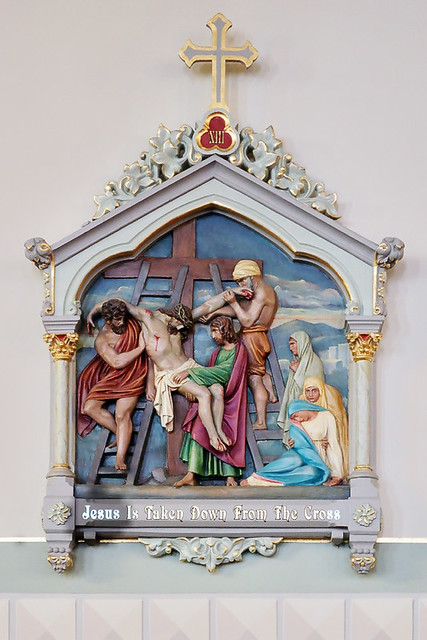
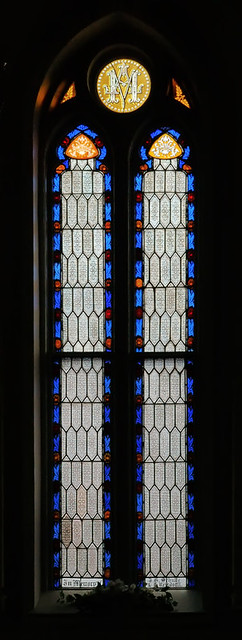
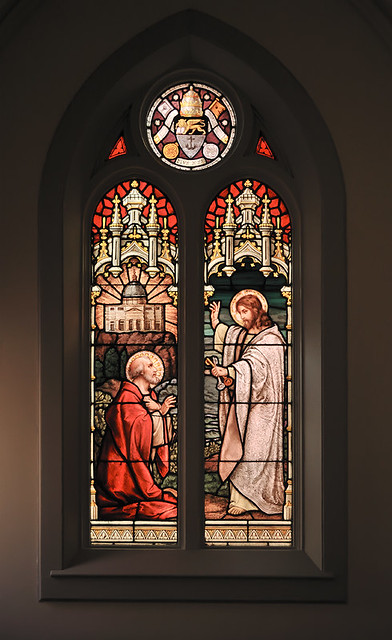
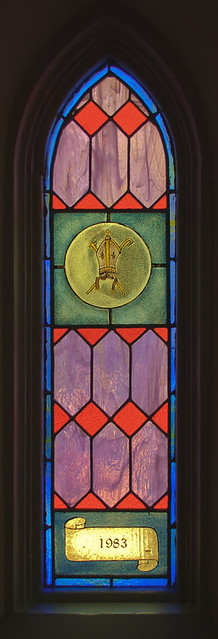

“Penance! Penance! Penance! Pray to God for sinners. Kiss the ground as an act of penance for sinners!”Such was the message of Mary to Bernadette at Lourdes. This is a command that we ought to follow today. Unfortunately, penance seems to be largely a lost practice hereabouts, especially public penance.
 SAINT FRANCIS DE SALES ORATORY EMAIL NEWSLETTER 2653 Ohio Avenue Saint Louis, Missouri 63118 www.institute-christ-king.org www.TraditionForTomorrow.com 314-771-3100 | ||
|